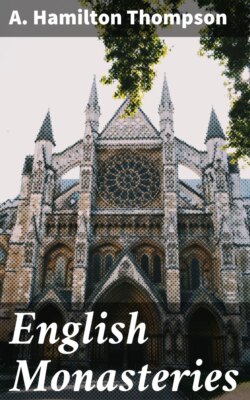Читать книгу English Monasteries - A. Hamilton Thompson - Страница 19
На сайте Литреса книга снята с продажи.
§ 16.
ОглавлениеTable of Contents
The monastic movement was not in the first instance a clerical movement, nor can the earliest founders have contemplated that their convents would include more than a few priests for the ministration of the Sacraments. But the ideal of the regular life as pursued in the monasteries attracted clergy as well as laymen. As early as 391, St. Augustine established communities of regular clergy in Africa. In the later years of the eighth century, Chrodegand, bishop of Metz, introduced a rule of life, founded upon that of St. Benedict, among the clergy of his cathedral, which was copied by other similar congregations of clergy. From this adoption of a rule (canon, κάνων) the members of such bodies became known as canons, and the bodies themselves, meeting in chapter-houses, where, as in monasteries, a chapter (capitulum) of the rule was read daily, took the name of chapters (capitula). The main object of the movement was the daily recitation of the canonical hours: the canons had their meals in common, and in some cases had a common dorter or dormitory. The tendency during the ninth and tenth centuries seems to have been for canons to establish their separate households in the neighbourhood of the church which they served. A marked distinction arose between the monks of cathedral priories such as Canterbury and the secular canons who served such churches as the cathedral of York. In the secular chapters the recitation of the hours was maintained and certain common funds were administered; but each canon had his own separate estate, a church or manor known as a prebend (prebenda), and the richer prebends became the perquisites of clerks in constant attendance upon the king or upon some bishop or nobleman. The number of resident canons was very small, and the duties of absentees were taken by their vicars (vicarii) or deputies. Colleges of chantry-priests, usually of late foundation, were organised as similar associations of secular clergy, who were bound, however, from the nature of their duties to continual residence. The colleges of Oxford and Cambridge had a similar basis. They were associations of clergy for teaching and study, with a common hall and church, and are therefore derived from a source distinct from the monastic movement.
